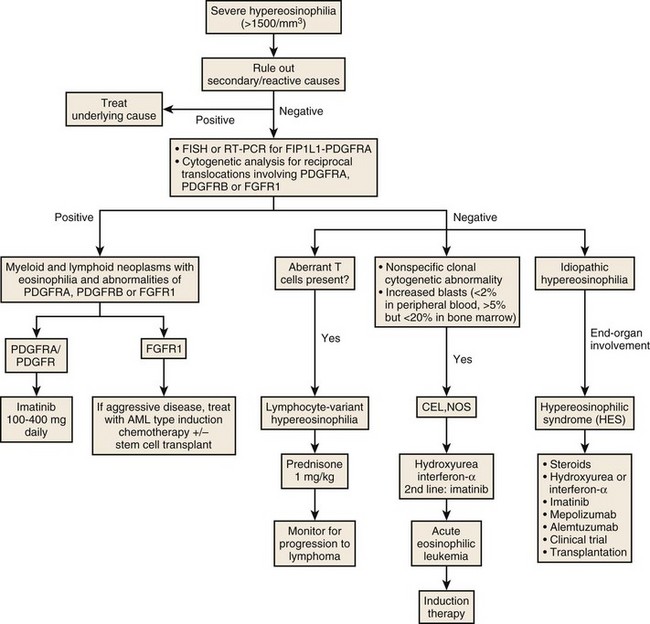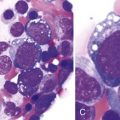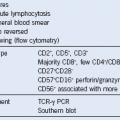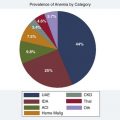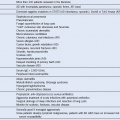Chapter 31 Eosinophilia, Eosinophil-Associated Diseases, Chronic Eosinophil Leukemia, and the Hypereosinophilic Syndromes
Diagnosis and Workup of Hypereosinophilic Syndrome
• Complete/detailed history and physical examination
• Review of all medications (including herbal medications and nutritional supplements); withdrawal of all noncritical medications
• Complete blood count with total eosinophil count and review of peripheral blood smear
• Hepatic and renal function tests, urine analysis
• Serologic assays: erythrocyte sedimentation rate, rheumatoid factor, human immunodeficiency virus (HIV)
• Quantitation of total IgE level
• Serologic assays for Strongyloides, Trichinella, Toxocara, Entamoeba histolytica, Echinococcus, filariasis, and schistosomiasis
• Bone marrow aspirate and biopsy
• Cytogenetics, FISH, and molecular analyses (PDGFRA, PDGFRB, FGFR1 fusion genes, BCR-ABL, JAK2 V617F, KIT D816V, clonal TCR gene rearrangement)
• T-cell phenotyping by flow cytometry
• Chest radiograph; computed tomographic scan of chest, abdomen, and pelvis
• Electrocardiogram and echocardiogram
Diagnostic Criteria for HES/CEL
1. Persistent eosinophilia of greater than 1500 eosinophils/mm3 for more than 6 months
2. Exclusion of other potential “reactive” etiologies for the eosinophilia including parasitic, allergic, or other causes, and
3. Presumptive signs and symptoms of organ system dysfunction or involvement that appears related to the eosinophilia or is of unknown cause in the clinical presentation
Table 31-1 Diseases, Syndromes, and Conditions Commonly Associated With Peripheral Blood Eosinophilia and/or Tissue Eosinophilia
| INFECTIOUS AGENTS |
| Parasitic Infections |
| Fungal Infections |
| ALLERGIC DISEASES |
| RESPIRATORY TRACT DISORDERS |
Hypersensitivity pneumonitis (rare) Allergic bronchopulmonary aspergillosis Transient pulmonary infiltrates (Löeffler syndrome) Prolonged pulmonary infiltrates with eosinophilia (PIE syndrome) Stay updated, free articles. Join our Telegram channel
Full access? Get Clinical Tree


|
